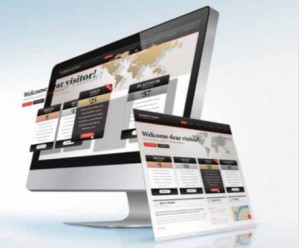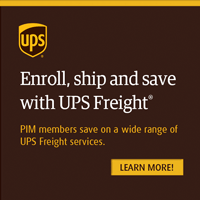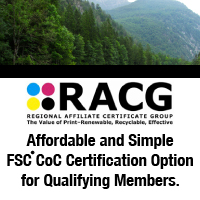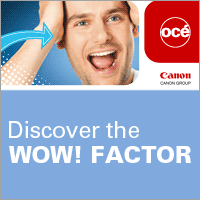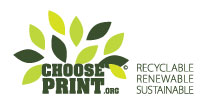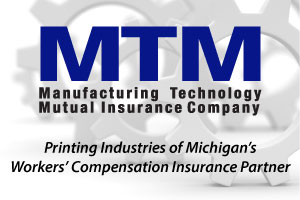By Charles Groce, CEO of Pearl Street Consulting

You may not have noticed, but March 2014 was a turning point in the history of content consumption and distribution. This was month in which mobile usage overtook desktop usage, the so called “mobile tipping point”. Two yeasr later, mobile continues to climb, with an estimated 1.9 billion global users of mobile devices compared to 1.7 billion desktop users.
This was a tipping point for publishing too, as content distributors needed to stop considering whether they should promote content over mobile and needed to start actually doing it.
Flip books, also known as eBooks or eZines, are a popular piece of software for the printing industry due to its ability to publish online quickly and without distruption to the well established print workflow. If you’re a publisher, you know the drill. Files come in, a PDF is put together, plates are made, and the job is printed. Then comes the part where the eZine is created. All your prepress tech has to do is upload the PDF to an eZine publishing platform and your magazine or other publication is online in 15 minutes.
It is certainly an axiom of publishing to make the consumption of content as convenient as possible for the reader. This is why we see billboards on our way to work, and not out in the middle of nowhere on some billboard farm.
Effectively content delivery over mobile requires a publisher consider the inescapable fact that mobile devices are small, and mobile screens have a limited number of pixels on which to display content. This means, while distributing textual and graphic information, content needs to be displayed more or less in a single column format, easily scrollable using only the reader’s thumb. No zooming or playing around with the interface should be required, since the mobile user may simply leave and find somewhere more convenient to consume this type of content, or they may simply not consume the content at all and move on to something else.
This is why flip books are poison for content being delivered over mobile devices. Flip books are laid out like a book or a magazine, which means in the abstract sense, content is already being distributed using a two column format (left page and right page). But then within each page, there are often multiple columns and complex layouts to convey information. These layouts are beautiful and part of the art of ink on paper. But they are an inconvenience for the mobile content consumer, who has to zoom and and move around the flip book to consume the content.
This is fine if you’re distributing a public annual report over the internet to a board of directors, but for any consumer you’re trying to convince to buy something, or prospective student you’re trying to encourage to sign up for a college program, the inconvenience of the format may run them off.
Before addressing the alternatives, let’s go over some of the statistics that show just how important the mobile internet is today to content distributors.
According to the Pew Research Center, as of October 2014, 91% of Americans have a smart phone. 63% of Americans who own a mobile use their mobile phone to browse the internet, which means 57% of Americans are mobile internet users. This number has doubled since 2009. 34% of mobile internet users use their phone as their primary internet device. This proportion is larger for the younger demographics, meaning that this proportion is guaranteed to continue to grow well into the future.
Publishers who ignore these figures do so at their own peril. We simply cannot ignore the implications for our industry. So now the question becomes: how do we get publication content online in such as a way as to effectively deliver content without adding much overhead to our established print-centric workflow? Flip books are not the answer, for the reasons outlined above. Although flip books do allow publishers to get content online easily and cheaply, their format for mobile web users discourages engagement with whatever call to action is being presented.
If you’re a printer, at best, you can hope your customers who are publishers do not understand this deficiency of the flip book format and are satisfied with the limited but nevertheless online and accessible everywhere flip book. But this doesn’t mean being a good partner. You should be providing solutions to problems, and should demonstrate your understanding of your customers end goals.
Publishers who want to put content online shoudl adopt a “content first/delivery channel neutral” online strategy. This means using a modern content management system, or CMS, which is used to store content in an online database and is designed to distribute content attractively to devices of any size: smart phone, net books, tablets, laptops, and large screen desktops. When a potential customer arrives at your site with their smart phone, the content is delivered in single column format. Later when they show their friends this great new product on their laptop, the content is delivered in multi column format. This is called “responsive design”.
Online marketing content that is delivered responsively see, one study has shown, 35% more engagement to the call to action than online marketing content which is not formatted for all devices. What you’re seeing is these figures are the problems of mobile content delivery I’ve described above. Web sites can suffer from the same formatting issues inherent in flip books. Responsive, device-conscious onlin content delivery methods are a market differentiator, and this means the eventual end of flip books and non-responsive websites alike.
About the author: Charles Groce is the CEO of Pearl Street Consulting, a Michigan-based IT, web, and software consultancy. Charles is also the owner/operator osforprint.com, an open source technology solutions provider for the printing industry.

